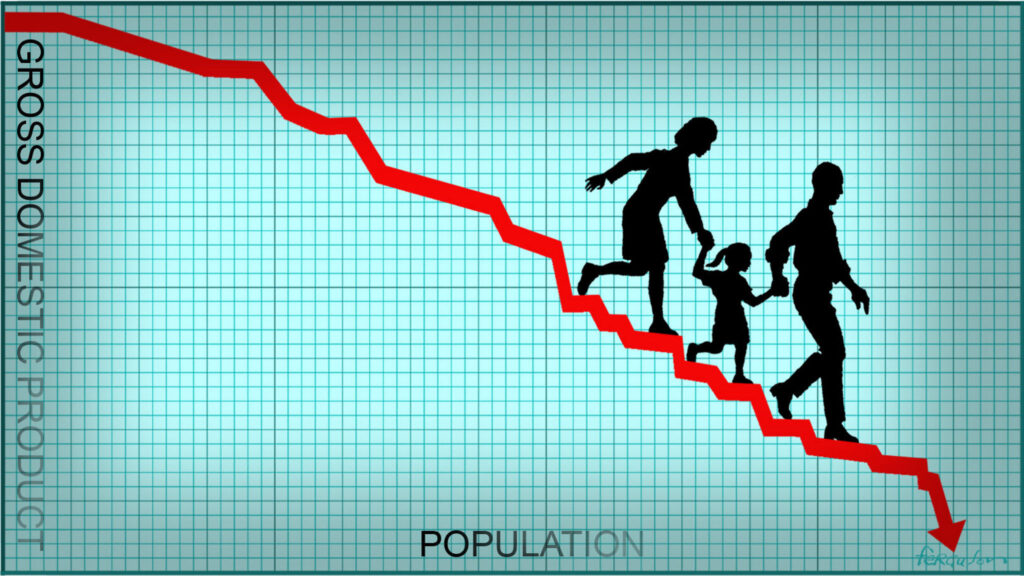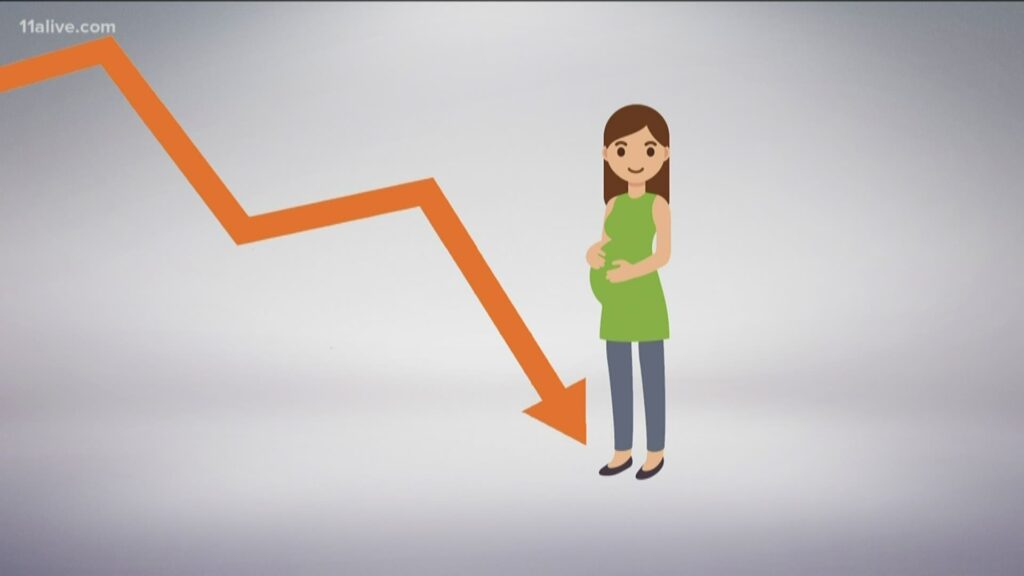
By Rev. Dr. Philippe SHOCK Matthews
(Black Trauma and Mental Health Specialist | Prompt Eng | GPT Dev | Research Scientist | Africana Phenomenologist)
The world’s buzzing about white people dying out. Is it a conspiracy? A self-fulfilling prophecy? Let’s dive in, separate fact from fiction, and look at what’s really happening.
Excess Mortality: A Troubling Uptick
There’s no denying it: white folks, especially in the U.S. and parts of Europe, are dying faster than they’re being born. It’s called “excess mortality,” and it’s not about mass murder or shadowy plots. It’s a knotty tangle of factors:
The Opioid Crisis
This ain’t your grandpa’s drug scene. Synthetic opioids like fentanyl are hitting white communities hard, driving overdose deaths through the roof. The opioid crisis has disproportionately affected white Americans, leading to a significant rise in mortality rates. Fentanyl, in particular, is an extremely potent synthetic opioid that is often mixed with other drugs, leading to a high risk of overdose. The epidemic has roots in both over-prescription of painkillers and the subsequent turn to illegal narcotics when prescriptions became harder to obtain. The Centers for Disease Control and Prevention (CDC) reported that opioids were involved in nearly 70% of all drug overdose deaths in the United States in 2019, with the trend continuing in subsequent years.
Economic Despair
Jobs lost to automation and globalization, stagnant wages, and crumbling communities take a toll, not just on wallets, but on health and hope. Many traditional industries that employed large numbers of white workers, particularly in rural and small-town America, have been in decline for decades. The loss of manufacturing jobs, the decline of coal mining, and the automation of many blue-collar jobs have left many communities in economic despair. The sense of economic displacement and hopelessness has had significant adverse effects on mental health, leading to increased rates of suicide and substance abuse.
Suicide
Men, especially, are struggling. Loneliness, depression, and the pressure to “be a man” can turn deadly when there’s no outlet. White men have the highest suicide rates in the United States, a statistic that reflects deeper societal issues such as toxic masculinity, isolation, and lack of mental health support. The American Foundation for Suicide Prevention notes that in 2019, white males accounted for 69.38% of suicide deaths. This alarming statistic highlights the urgent need for better mental health support and the de-stigmatization of seeking help.
Lifestyle Choices
Smoking, drinking, unhealthy diets… those bad habits catch up eventually. And they seem to be catching up faster for some white folks. Chronic diseases such as heart disease, cancer, and diabetes are heavily influenced by lifestyle choices. The prevalence of unhealthy diets, sedentary lifestyles, smoking, and excessive alcohol consumption contribute to these conditions. Public health initiatives have made some progress, but changing deeply ingrained behaviors is a slow process.
The Birth Dearth: Where Have All the Babies Gone?
It’s not just about dying; it’s also about not being born. Birth rates among white women are dipping lower than ever before. Why?
Economic Uncertainty
Kids are expensive. With rising costs and shaky job prospects, many are choosing to delay or forgo parenthood altogether. The economic pressures of modern life, including high housing costs, student debt, and uncertain job markets, make starting a family a daunting prospect. Many young adults are prioritizing financial stability over starting a family, leading to a decline in birth rates.
Changing Priorities
Career ambitions, travel, personal fulfillment… these are vying for attention alongside the traditional family model. The traditional model of getting married and having children early in life is being replaced by diverse life paths. More people are pursuing higher education, career advancement, and personal growth before considering parenthood. This shift reflects broader societal changes in gender roles and expectations.
Reproductive Freedom
Access to contraception and abortion has given women more control over their bodies and their lives, and some are choosing not to have kids. The ability to plan and space pregnancies has had a profound impact on birth rates. Women now have more opportunities to pursue their education and careers, and some are choosing to remain child-free. This autonomy over reproductive choices has contributed to declining birth rates.
Autogenocide and the Violent Fringe
Some folks are spinning this demographic shift into a dark fantasy: the “autogenocide” of the white race, driven by everything from immigration to birth control. It’s a dangerous idea, fueled by hate and fear. The concept of “white genocide” or “autogenocide” suggests that the decline in white populations is part of a deliberate effort to eliminate the white race. This idea is promoted by white supremacist and nationalist groups who use it to incite fear and hatred.
The Loud Minority
These folks are the loudest, but they’re not the majority. Most people are just trying to live their lives, not engineer a racial apocalypse. The majority of people understand that demographic changes are complex and multifaceted, not the result of some grand conspiracy. The fringe groups promoting these ideas are often small but vocal, using social media and other platforms to spread their messages.
Replacement Theory: A Conspiracy Theory Unmasked
Then there’s the “replacement theory,” the belief that a shadowy cabal is deliberately replacing white people with immigrants and minorities. This is pure conspiracy, with no basis in reality. Replacement theory is a baseless conspiracy theory that has been debunked repeatedly. It suggests that elites are orchestrating mass immigration to replace the white population. This theory is rooted in racism and xenophobia and has been used to justify violence and discriminatory policies.
Racism Plain and Simple
It’s important to call this out for what it is: racism, plain and simple. It’s a way to scapegoat others for complex problems, and it’s got no place in a healthy society. The idea of a deliberate “replacement” is a distraction from real issues such as economic inequality, systemic racism, and the challenges of global migration. It serves to divide rather than address the root causes of societal problems.
The Incel Phenomenon: Toxic Masculinity Unleashed
Incels, or “involuntary celibates,” are a mostly online community of men who blame women and society for their inability to find romantic or sexual partners. It’s a breeding ground for misogyny, self-pity, and sometimes, violence. The incel movement has gained attention for its extreme misogyny and occasional acts of violence. Incels feel entitled to sex and relationships and blame their lack of success on women and society at large. This toxic mindset is a manifestation of deeper issues related to gender norms and mental health.
Toxic Masculinity
The incel movement is a symptom of a deeper problem: toxic masculinity. It’s the idea that men are entitled to sex and that women are objects to be conquered, not human beings with agency. Toxic masculinity promotes harmful stereotypes about what it means to be a man, including the suppression of emotions, the rejection of vulnerability, and the belief in male dominance. This cultural construct damages both men and women, leading to unhealthy relationships and societal expectations.
Demographic Shifts: A Global Perspective
Shifting demographics are not unique to white populations in the U.S. and Europe; they are a global phenomenon. Many countries are experiencing aging populations, declining birth rates, and changes in the ethnic composition of their societies.
Aging Populations
Countries like Japan and Italy are facing significant challenges due to aging populations. With a large proportion of the population over the age of 65, these countries are grappling with increased healthcare costs, a shrinking workforce, and the need for supportive social services. The aging population trend is a global issue, reflecting advancements in healthcare and changes in fertility rates.
Declining Birth Rates

Many developed nations are experiencing declining birth rates, leading to concerns about population sustainability and economic growth. Factors contributing to this trend include greater access to education and contraception, economic pressures, and changing cultural norms around family and career. Governments in some countries are implementing policies to encourage higher birth rates, such as parental leave, child care support, and financial incentives for families.
Immigration and Multiculturalism
Immigration is reshaping the demographic landscape in many countries. While this can lead to tensions and fears about cultural identity, it also brings economic benefits and cultural enrichment. Immigrants often fill labor shortages, contribute to innovation, and bring diverse perspectives. Multiculturalism can strengthen societies by promoting inclusivity and understanding.
Addressing the Root Causes
Understanding the complexities behind demographic changes requires addressing the root causes rather than succumbing to fear and conspiracy theories. This involves tackling issues such as economic inequality, access to healthcare, education, and creating inclusive societies.
Economic Policies
Policies that address economic disparities and create opportunities for all citizens are crucial. This includes investing in education, job training, and infrastructure to create a more equitable society. Economic stability and growth are essential for encouraging higher birth rates and reducing excess mortality.
Healthcare Access
Improving access to healthcare, including mental health services, is vital. Addressing the opioid crisis, providing support for those struggling with addiction, and destigmatizing mental health care can save lives. Comprehensive healthcare policies that include preventive care and support for chronic conditions are necessary.
Education and Awareness
Education and awareness campaigns can combat misinformation and promote understanding. This includes addressing the harmful effects of toxic masculinity, promoting gender equality, and educating the public about the realities of demographic changes. Schools, media, and community organizations play a crucial role in these efforts.
Conclusion
The fear of demographic changes among white populations is fueled by a mix of real challenges and unfounded conspiracy theories. Excess mortality, declining birth rates, and the rise of extremist ideologies reflect deeper societal issues that need to be addressed. By focusing on the root causes, promoting inclusivity, and creating supportive policies, we can navigate these demographic shifts in a way that benefits all members of society.
It’s time to move beyond fear and scapegoating and work towards a future where everyone has the opportunity to thrive. Demographic changes are a part of the natural evolution of societies, and with thoughtful, inclusive policies, we can ensure that these changes lead to a more just and equitable world.
Brought To You Buy…
- George Fraser’s PowerNetworking Conference https://t.ly/6N6it
- BlackTraumaGPT.com http://blacktraumagpt.com/
- MyGuardianDoc™ https://bit.ly/3TlgPaE – Your One-Stop for On-Demand Compassionate Medical Guidance, Urgent Care, Primary Care, and Virtual Second Opinions, all provided by licensed Medical Doctors.
Enjoy our content? Become a member of our Patreon https://www.patreon.com/revshock or support our 1st Frequency of Oneness Research Fund https://bit.ly/42lr54b
Socials:
SOLO: https://solo.to/revshock | BIO: https://t.ly/Ko_y_ | BLOG: https://t.ly/j6bh0 | PODCAST: https://t.ly/cB5GD | ENDORSEMENT: https://t.ly/jFErO | THREADS: https://t.ly/SoKkT | GRAM: https://t.ly/XsN8f | FB: https://t.ly/R3r9Y | TWITTER: https://t.ly/iJ-wy | LINKEDIN: https://t.ly/GZ0pe | TIKTOK: https://t.ly/zfp60
